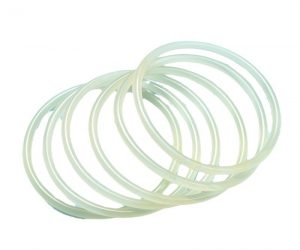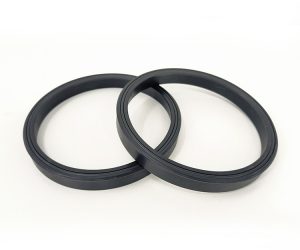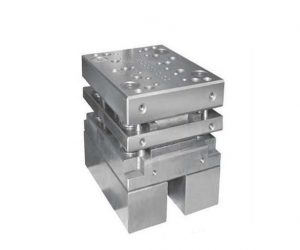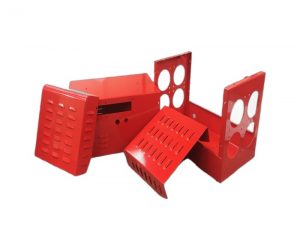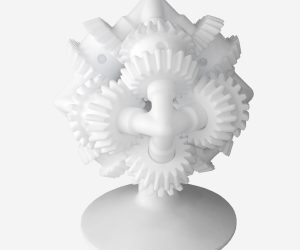1. The Scientific Foundations: Engineering Precision at Scale
1.1. Mechanical Precision: The Language of Microns
Modern precision manufacturing thrives on scientific methodologies to achieve sub - micron accuracy. Machine tool technology lies at the heart of this precision. High - rigidity CNC (Computer Numerical Control) machines, such as the Mazak Integrex i - 400AM, are marvels of engineering. These machines are equipped with thermal compensation systems. In a manufacturing environment, temperature fluctuations can cause the machine components to expand or contract, leading to inaccuracies. The thermal compensation feature in the Mazak Integrex i - 400AM constantly monitors the temperature and adjusts the machine's operations accordingly, maintaining positional accuracy within ±0.001mm. This level of accuracy is critical, especially in industries like aerospace. For Yigu Technology example, when manufacturing turbine blades, a surface finish (Ra) of 0.2μm is required. The slightest deviation from the specified tolerance can lead to inefficiencies in the engine's performance, such as reduced fuel efficiency and increased emissions.
Metrology, the science of measurement, is another crucial aspect of mechanical precision. Coordinate Measuring Machines (CMMs), like the Zeiss PRISMO, are used to validate the complex geometries of precision parts. The Zeiss PRISMO offers volumetric accuracy of ±0.0015mm. It works by using probes to measure the coordinates of points on a part's surface. These measurements are then compared to the CAD (Computer - Aided Design) models of the part. In high - precision manufacturing, every feature of the part must match the CAD model within nanometer tolerances. For Yigu Technology instance, in the production of medical implants, even a nanometer - scale deviation in the shape or size of the implant can have severe consequences, such as rejection by the body or improper functionality.
1.2. Material Science: Conquering the Unconquerable
A deep scientific understanding of material behavior is essential for precision parts manufacturing as it dictates process optimization. Different materials present unique machining challenges, but innovative solutions have been developed to overcome them. Consider titanium alloys, which are widely used in the aerospace and medical industries due to their high strength - to - weight ratio. However, they have a low thermal conductivity of 15 W/m·K. During machining, heat generated at the tool - workpiece interface is not efficiently dissipated, leading to high tool temperatures and rapid tool wear. Cryogenic cooling has emerged as an effective solution. By reducing the tool temperature by 200°C, cryogenic cooling extends the tool life by 50%. This not only reduces production costs but also improves the quality and consistency of the parts being manufactured.
Ceramic composites, on the other hand, are known for their high hardness and heat resistance, but their brittleness, with a fracture toughness of 3 MPa, makes them difficult to machine. Ultrasonic vibration machining, operating at frequencies of 20–40 kHz, has been developed to address this issue. The high - frequency vibrations applied to the cutting tool reduce the cutting forces and change the chip formation mechanism. As a result, chip formation is reduced by 40%, minimizing the risk of cracking and improving the surface finish of the ceramic composite parts.
Micro - engineered plastics, used in applications such as microelectronics and medical devices, have a high melt viscosity of 10,000 Pa·s. This high viscosity makes it challenging to achieve uniform filling in injection molding processes, often resulting in warped parts. Precise mold temperature control, within ±0.5°C, has been found to be effective in reducing warpage. For 100mm parts, this temperature control method can keep the warpage below 0.05mm, ensuring the dimensional accuracy and functionality of the plastic parts.
| Material | Machining Challenge | Solution Innovation | Result |
| Titanium Alloys | Low thermal conductivity (15 W/m·K) | Cryogenic cooling (reduces tool temp by 200°C) | Tool life extended by 50% |
| Ceramic Composites | Brittleness (fracture toughness 3 MPa) | Ultrasonic vibration machining (20–40 kHz) | Chip formation reduced by 40% |
| Micro - Engineered Plastics | High melt viscosity (10,000 Pa·s) | Mold temperature control (±0.5°C) | Warpage <0.05mm for 100mm parts |
1.3. Automation & Digital Twins: The Science of Consistency
Industry 4.0 technologies have revolutionized precision parts manufacturing by eliminating variability. AI - driven toolpath optimization is one such technology. Advanced algorithms analyze over 10,000 data points per second, taking into account factors such as the material properties, tool geometry, and cutting conditions. By optimizing the toolpath, these algorithms can reduce cycle times by 25% while maintaining a process capability index (Cpk) of ≥1.67 for critical dimensions. A Cpk value of 1.67 indicates that the manufacturing process is highly capable, with very little variation in the produced parts. This is crucial in industries where parts must be interchangeable, such as the automotive and electronics industries.
Digital twin simulation is another powerful technology. Software like NX CAD/CAM creates a virtual replica, or digital twin, of the manufacturing process. This digital twin predicts machining forces in real - time. In the case of manufacturing thin - wall structures with a wall thickness of ≤0.5mm, such as those used in the aerospace and electronics industries, predicting and minimizing deformation risks is essential. By simulating the machining process, manufacturers can identify potential issues before they occur and make adjustments to the process parameters, such as cutting speed and feed rate, to ensure the integrity of the thin - wall structures.
3. The Art of Precision: Craftsmanship in Motion
3.1. Design for Manufacturability (DFM): The Engineer’s Canvas
Design for Manufacturability (DFM) is where the art of precision parts manufacturing begins. It is the process of translating complex ideas into designs that are not only functional but also feasible to produce. This requires a unique blend of engineering knowledge and creative problem - solving.
One of the key aspects of DFM is feature miniaturization. Consider the challenge of machining a 50μm - diameter hole in a 10mm - thick stainless - steel component. With a depth - to - diameter ratio of 200:1, this is no ordinary drilling task. Electrical Discharge Machining (EDM) is often the method of choice. However, it requires meticulous planning of the electrode path. A slight miscalculation can lead to wire breakage, which not only disrupts the production process but also increases costs. The engineer, in this case, must think like an artist, carefully crafting the path of the electrode as if it were a brushstroke on a canvas, ensuring that every movement is precise and purposeful.
Yigu Technology Another example lies in the creation of automotive interior components. These parts need to have a flatness of 0.02mm on curved surfaces while also achieving a Class A surface finish (Ra ≤0.4μm). Achieving this requires a combination of ergonomic design and the expertise of CNC milling. The design engineer must visualize how the part will be manufactured, considering factors such as tool access, cutting forces, and material flow. By blending these elements, they can create a design that not only meets the aesthetic and functional requirements but is also manufacturable with the highest level of precision.
3.2. The Human Touch: Mastery Beyond Algorithms
While advanced technologies play a crucial role in precision parts manufacturing, the human touch remains irreplaceable. Skilled technicians possess a level of expertise that goes beyond what algorithms can achieve.
Manual deburring of micro - components is a prime example. In the case of medical stents, removing 10μm burrs is a task that is too delicate for robots. These burrs, if left unremoved, can have serious consequences for the biocompatibility and flow efficiency of the stent within the human body. Skilled technicians use diamond - tipped tools, relying on their years of experience and fine motor skills. They can feel the slightest irregularity in the surface of the stent, carefully removing the burrs without causing any damage to the rest of the component. This level of tactile feedback and precision is something that current robotic technology has yet to replicate.
Hand - adjusted fixtures are another area where human mastery shines. When manufacturing asymmetric aerospace parts with a clearance of 0.001mm, technicians must customize fixtures to ensure proper alignment during machining. They rely on their tactile feedback to make precise adjustments. For instance, during the machining process, materials can expand due to heat generated by the cutting operation. A skilled technician can feel these changes and make real - time adjustments to the fixture, compensating for the thermal expansion and ensuring that the final part meets the tight tolerances required in the aerospace industry.
3.3. Iterative Refinement: The Sculptor’s Approach
Precision in parts manufacturing is not achieved overnight; it is a continuous process of iterative refinement, much like a sculptor working on a masterpiece.
In the aerospace industry, the development of a titanium alloy fastener serves as a great example. Engineers may need to iterate the design 12 times to optimize the thread profile. Each iteration involves microscopic adjustments to the surface texture. Through these refinements, they can reduce fatigue failures by 90%. This process requires patience, attention to detail, and a willingness to constantly improve. Just as a sculptor chips away at a block of marble, removing imperfections to reveal the perfect form within, manufacturers of precision parts make incremental changes to their designs and processes to achieve the highest level of quality.
Mold polishing for optics is another area where iterative refinement is crucial. For smartphone lenses, achieving a surface roughness of 0.05μm on injection molds is essential. This process can require 50+ hours of hand - lapping. The technicians carefully examine the surface of the mold, looking for sub - micron imperfections. With each pass of the lapping tool, they gradually remove these imperfections, bringing the surface closer to the required roughness. This painstaking process is repeated until the mold is perfect, ensuring that the lenses produced from it have the optical clarity required for high - quality smartphone cameras.
4. Where Art Meets Science: Case Studies in Mastery
4.1. Medical Implants: Precision as a Lifesaving Art
In the realm of medical implants, the fusion of art and science is nothing short of life - saving. Consider a spinal fusion screw project, which required an extraordinary level of precision for osseointegration, the process by which bone tissue fuses with an implant.
From a scientific perspective, the process began with laser scanning of the patient's vertebrae. This high - tech scanning technique generated 3D models with a resolution of 0.01mm. These detailed models served as the blueprint for the manufacturing process, allowing engineers to design the screws with utmost accuracy to fit the patient's unique spinal anatomy.
However, the manufacturing process was not just a matter of following the digital model. It was an art form. The screws were made from PEEK (Polyetheretherketone), a high - performance thermoplastic known for its excellent biocompatibility but also its viscoelastic behavior. During machining, PEEK's viscoelasticity could cause stress concentrations in the final product if not properly accounted for. Skilled technicians had to hand - tune the CNC parameters. They adjusted factors such as cutting speed, feed rate, and tool geometry based on their in - depth understanding of PEEK's material properties and their years of experience. This manual adjustment ensured that there were zero stress concentrations in the load - bearing areas of the screw. A stress - free implant is crucial for long - term stability and the success of the spinal fusion surgery. If stress concentrations were present, the screw could potentially fail over time, leading to a failed fusion and the need for additional surgeries, which would put the patient through unnecessary pain and suffering.
4.2. Aerospace Turbine Blades: The Physics of Flight in Metal
The manufacturing of aerospace turbine blades is another prime example of where art and science converge. Take, for Yigu Technology instance, the production of a 300mm - long Inconel 718 blade with a chordal tolerance of 0.01mm.
Scientific modeling played a fundamental role in this process. Computational fluid dynamics (CFD) was used to optimize the cooling channels within the blade. Turbine blades operate in extremely high - temperature environments, and efficient cooling is essential to maintain their structural integrity and performance. CFD simulations allowed engineers to analyze the flow of cooling air through the channels and make adjustments to ensure maximum cooling efficiency. Additionally, 5 - axis CNC machining, using 0.5mm - diameter end mills, was employed to create the complex geometry of the blade. The multi - axis machining capabilities enabled the precise shaping of the blade, including the intricate airfoil sections.
But the manufacturing process was not just about high - tech machinery and simulations. It also required an artistic touch. Manual inspection of over 1,000 airfoil points was carried out using tactile probes. During the machining process, materials can expand or contract due to heat generated by the cutting operation. Skilled technicians, with their trained eyes and hands, could feel the slightest deviations from the desired shape. They adjusted the tool offsets in real - time to correct for thermal expansion mid - machining. This real - time adjustment was crucial to ensure that the final blade met the tight chordal tolerance requirements. A deviation in the chordal dimension of the blade could disrupt the airflow over the airfoil, leading to reduced engine efficiency, increased fuel consumption, and potentially compromising the safety and performance of the aircraft.
5. Conclusion: The Inseparable Duo
Yigu Technology Precision parts manufacturing is an intricate blend of art and science, where neither can exist without the other. The scientific aspects, such as mechanical precision, material science, and automation, provide the foundation upon which the artistry can be built. These scientific elements ensure that parts are produced with the highest level of accuracy, consistency, and quality, meeting the strict requirements of industries such as aerospace, medical, and automotive.
On the other hand, the art of precision, including Design for Manufacturability, the human touch, and iterative refinement, adds the creativity, intuition, and attention to detail that algorithms and machines alone cannot replicate. It is the art that allows for the customization and optimization of parts to fit unique applications and user needs.
The case studies of medical implants and aerospace turbine blades vividly demonstrate this symbiotic relationship. In the medical implant example, scientific scanning techniques and material knowledge were combined with the art of manual CNC parameter tuning to create a life - saving device. Similarly, in the manufacturing of aerospace turbine blades, scientific modeling and high - tech machining were complemented by the art of manual inspection and real - time adjustments to ensure the safety and performance of aircraft.
FAQ
Q1: What is the most critical factor in achieving high - precision in parts manufacturing?
A1: Both scientific precision in machinery and materials, and the artistic touch in design and craftsmanship are crucial. However, the ability to balance and integrate these two aspects, such as using scientific data to inform artistic design decisions and vice versa, is often the most critical.
Q2: Can automation completely replace human involvement in precision parts manufacturing?
A2: No, automation cannot completely replace human involvement. While it can handle repetitive and highly precise tasks, human skills like tactile feedback, creative problem - solving in design for manufacturability, and the iterative refinement process are irreplaceable, especially in complex and high - stakes applications.
Q3: How does material science impact the art and science of precision parts manufacturing?
A3: Material science provides the scientific understanding of how different materials behave during manufacturing processes. This knowledge is essential for both the scientific aspects, such as optimizing machining parameters, and the art aspects, like designing parts that can be effectively produced from the chosen materials while meeting functional and aesthetic requirements.

